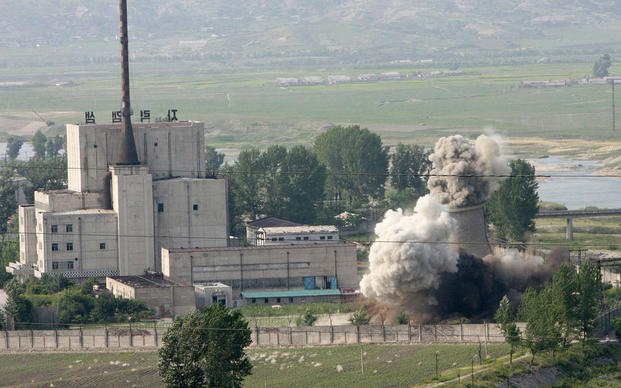SEOUL, South Korea — North Korea may have started operating a light-water reactor at its main nuclear complex in a possible attempt to establish a new facility to produce bomb fuels, the U.N. atomic agency and outside experts said.
If correct, the assessment would show that North Korea has taken a step to implement leader Kim Jong Un’s repeated vows to build more nuclear weapons in response to what he described as intensifying U.S.-led military threats.
The International Atomic Energy Agency has observed increased levels of activity at and near the light-water reactor at the Yongbyon nuclear complex and since mid-October, a strong water outflow from its cooling system, IAEA Director General Rafael Grossi said Thursday.
The observations were consistent with the commissioning of the reactor, Grossi said.
“The LWR, like any nuclear reactor, can produce plutonium in its irradiated fuel, which can be separated during reprocessing, so this is a cause for concern,” he said. “I repeat that the further development of (North Korea's) nuclear program, including the construction and operation of the LWR, is a violation of U.N. Security Council resolutions and is deeply regrettable."
The International Atomic Energy Agency has not had access to Yongbyon or other locations in North Korea since the country kicked out the agency's inspectors in 2009. The IAEA has said it uses satellite imagery and open source information to monitor developments in North Korea’s nuclear program.
Observers say light-water reactors are best-suited for electricity generation, but North Korea could adapt one at Yongbyon to produce plutonium for weapons. Shin Jongwoo, a military expert at the Seoul-based Korea Defense and Security Forum, said the Yongbyon complex isn’t used for producing civilian energy so outsiders suspect the reported light-water reactor operation is related to the North’s nuclear weapons program.
“North Korea has talked about bolstering its nuclear strength and building more tactical nuclear weapons to be mounted on ballistic missiles. So (the light-water reactor operation) is suspected to be activities” to extract plutonium, Shin said.
Plutonium is one of the two key ingredients used to manufacture nuclear weapons, along with highly enriched uranium. Yongbyon has long produced plutonium from its widely known 5-megawatt reactor, and the light-water reactor would be an additional plutonium-producing source. Yongbyon has an uranium-enrichment facility as well.
Construction of the light-water reactor began a decade ago. It is known to have a bigger capacity than the 5-megawatt reactor, meaning it could produce more bomb fuel, according to Lee Choon Geun, an honorary research fellow at South Korea’s Science and Technology Policy Institute.
Lee said plutonium is better suited for miniaturized nuclear warheads. Some experts say North Korea has been working to build warheads small enough to be placed on short-range missiles targeting South Korea.
Grossi said recent observations indicate that the water discharge seen in October is warm, an indication the reactor has reached criticality. But without access to the facility, the IAEA cannot confirm the reactor is operating.
In 2019, during a summit with then-President Donald Trump, Kim Jong Un offered to dismantle the Yongbyon complex if he won extensive sanctions relief. But the Americans rejected Kim’s offer because it would be a limited denuclearization step that would leave North Korea's already-built nuclear weapons and covert nuclear facilities intact.
After his diplomacy with Trump fell apart, Kim has focused on enlarging his nuclear arsenal and building more high-tech weapons in what experts believe is a bid to increase his leverage in future diplomacy with the U.S. In a key political meeting in December 2022, Kim ordered the “exponential” expansion of the North's nuclear arsenal.
Tensions on the Korean Peninsula deepened earlier this week, after North Korea test-launched the solid-fueled Hwasong-18 intercontinental ballistic missile — its most advanced weapon designed to strike the mainland U.S. — in its third test this year.
The Yongbyon complex, which North Korea calls “the heart” of its nuclear program and research, has been at the center of international concerns for decades. It’s not clear exactly how much weapons-grade plutonium or highly enriched uranium has been produced at Yongbyon and where North Korea stores it.
According to a South Korean estimate in 2018, North Korea had manufactured 20-60 nuclear weapons. But some experts say the North likely has more than 100 nuclear weapons.











